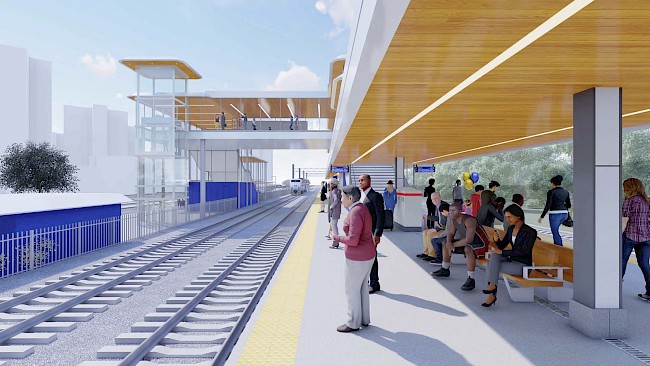December 9, 2022
Ground Broken for Metro North Penn Station Access
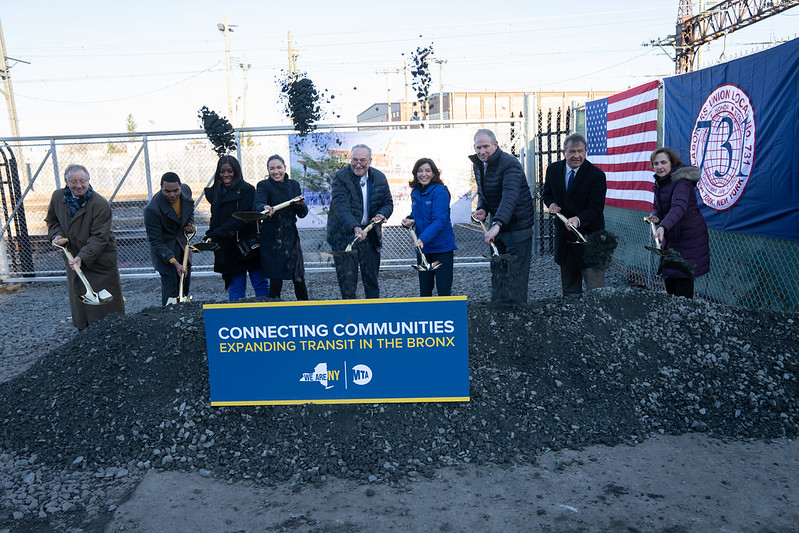
Photo and other Images from the Office of the NYS Governor
On December 9, 2022 Governor Kathy Hochul announced the groundbreaking for the Metro-North Penn Station Access project alongside leaders from the Metropolitan Transportation Authority during a ceremony in the Bronx.
With four new stations in the Bronx, this project will bring rail service within one mile of 500,000 residents and will be the largest expansion of Metro-North Railroad since it was founded in 1983. By offering rail service to and from Manhattan, Westchester and Connecticut, this will expand access to jobs, education and entertainment for East Bronx communities. Additionally, the project will greatly reduce travel times, provide reverse commuting opportunities and offer a critical second route into Manhattan for the first time ever through Metro-North.
The four new stations will be in Hunts Point, Parkchester/Van Nest, Morris Park, and Co-Op City and will be accessible to all in accordance with the Americans with Disabilities Act.
The expansion will use Amtrak's Hell Gate Line to access Penn Station, optimizing existing infrastructure and minimizing the construction impact on surrounding communities. Metro-North trains stopping at the four new Bronx stations will serve as an extension of the New Haven Line from the New Rochelle Station, offering transit options in the East Bronx to Midtown Manhattan as well as points in Westchester, Connecticut and inversely.
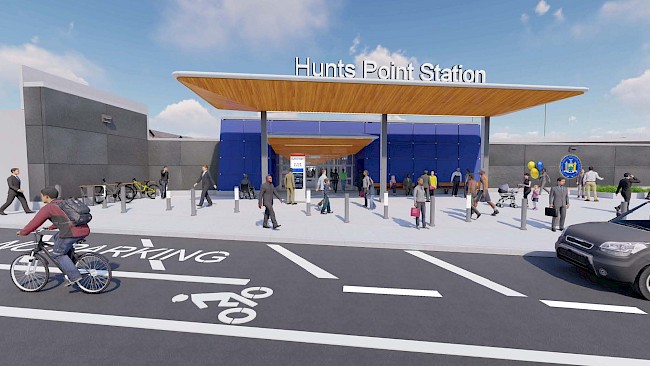
Project Benefits:
- Significantly cuts down travel time. East Bronx passengers traveling to Penn Station can save up to 50 minutes each way, and those traveling to Connecticut can save up to 75 minutes. As an example, from the proposed Co-Op City station to Penn Station it takes about 75 minutes to reach Penn Station, with completion of Penn Station Access, the travel time is expected to be only about 25 minutes. Current New Haven Line riders with destinations on the west side can save up to 40 minutes per day.
- Increase in reverse commuting opportunities. Reverse commuters will be able to more easily travel from Penn Station to Hunts Point, Parkchester/Van Nest, Morris Park, Co-op City, Westchester and southern Connecticut.
- Local economy benefits and improved sustainability. Improving access to the East Bronx, Westchester and Connecticut will benefit local educational campuses, medical institutions, and retail centers. By greatly reducing travel times, Penn Station Access will make public transit a viable, attractive travel alternative, encouraging drivers to switch to mass transit, reducing traffic congestion and emissions.
- Improved regional connections. With the additional options, Bronx residents and also those coming from the greater New York City area, Westchester, Connecticut, and the Northeast region, will be able to more easily reach destinations throughout the Northeast with connections to NJ Transit, LIRR, PATH, Amtrak, and NYCT subways.
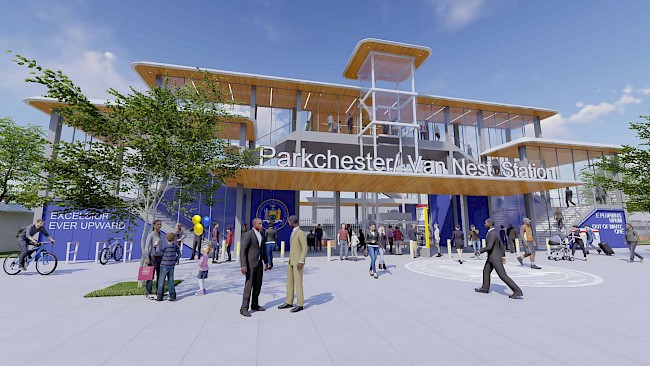
Project Benefits
- Significantly cuts down travel time. East Bronx passengers traveling to Penn Station can save up to 50 minutes each way, and those traveling to Connecticut can save up to 75 minutes. As an example, from the proposed Co-Op City station to Penn Station it takes about 75 minutes to reach Penn Station, with completion of Penn Station Access, the travel time is expected to be only about 25 minutes. Current New Haven Line riders with destinations on the west side can save up to 40 minutes per day.
- Increase in reverse commuting opportunities. Reverse commuters will be able to more easily travel from Penn Station to Hunts Point, Parkchester/Van Nest, Morris Park, Co-op City, Westchester and southern Connecticut.
- Local economy benefits and improved sustainability. Improving access to the East Bronx, Westchester and Connecticut will benefit local educational campuses, medical institutions, and retail centers. By greatly reducing travel times, Penn Station Access will make public transit a viable, attractive travel alternative, encouraging drivers to switch to mass transit, reducing traffic congestion and emissions.
- Improved regional connections. With the additional options, Bronx residents and also those coming from the greater New York City area, Westchester, Connecticut, and the Northeast region, will be able to more easily reach destinations throughout the Northeast with connections to NJ Transit, LIRR, PATH, Amtrak, and NYCT subways.
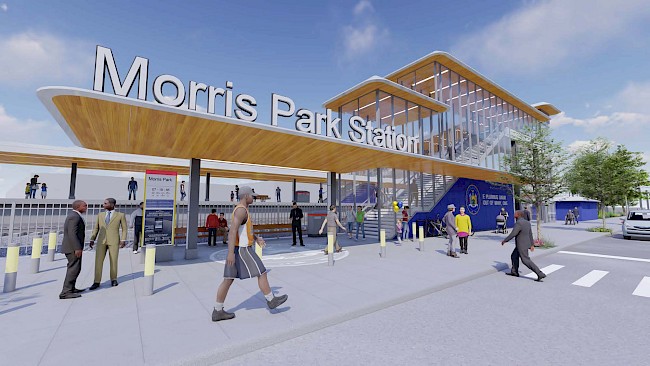
Project Details
In addition to four new ADA stations, the project will turn the existing 2-track railroad into a largely 4-track railroad, with over 19 miles of new and rehabilitated track work. This expansion to a 4-track railroad will provide service flexibility to support the increase in Metro-North and Amtrak trains expected to operate through the area and allow for workarounds in the event of a service disruption.
The additional service necessitates an expansion of Metro-North's New Rochelle Yard in Westchester, along with modernization of signal, power and communication infrastructure. This will consist of four new interlockings, five new substations, reconfiguration of the Pelham Bay interlocking and upgrade of two existing substations.
The project also includes rehabilitation work to repair and strengthen the following four bridges to carry additional train traffic: Bronx River Bridge, Eastchester Road Bridge, Bronxdale Avenue Bridge and Pelham Lane Bridge.
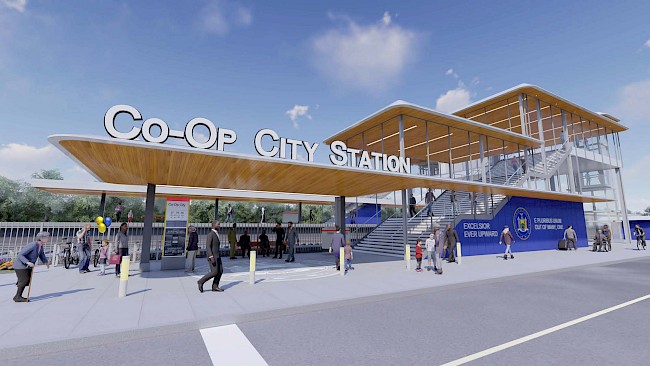
Project Timeline
In September 2021, the Federal Transit Administration issued a Finding of No Significant Impact, allowing the project to proceed. On December 29, 2021, the MTA awarded the Design-Build contract to the joint venture of HalmarInternational, LLC and RailWorks.
One of the first project elements to take place will be the construction of the Leggett interlocking, one of the four new interlockings. The Leggett interlocking will be located south of the proposed Hunts Point Station. Construction of actual passenger rail stations is expected to begin 2024. The anticipated completion date for the Penn Station Access Project is 2027.
